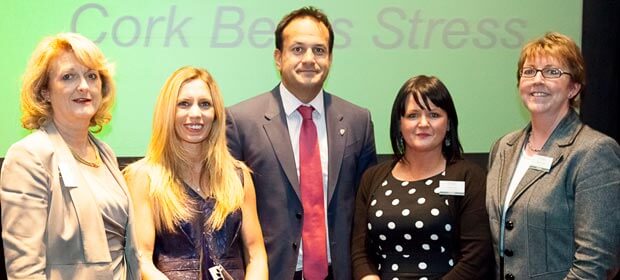Early intervention and prevention are the future not only for the Speech and Language Service but for all areas of healthcare, write Elizabeth Downey and Carmel Feely.

Chatterbox (2004) is a unique early intervention service aimed at the prevention, early identification, and minimising speech & language difficulties within the pre-school population (0-6years) in targeted areas of identified need in Co. Monaghan & Co. Cavan.
Chatterbox fulfills its aims through its unique partnership between Primary Care Speech and Language Services and the County Childcare Committees.
The child-centered, community driven service has proven its effectiveness and popularity with service users as well as with organisations/agencies within the wider community.
Chatterbox was initiated out of a response to the growing crisis of increased non-attendance within areas of high social disadvantage. Research found that 70 per cent of non-attendance to SLT appointments were clients who lived in areas in close proximity to a Family Resource Centre (FRC). Therefore the SLT department made the pioneering decision to go into the community and develop a clinic within a Family Resource Centre which would be more physically accessible, a more familiar environment and in a centre that could help families who often attended with additional and complex needs. After a successful pilot period positive outcomes such as increased attendance and improved language scores were reported.
To develop its broader vision of prevention and early intervention, Chatterbox completed an in-depth literature review. The purpose of this was to provide an evidence base for the future development of Chatterbox. The result of this literature review confirmed that there was much research to support an early intervention model of SLT service delivery especially during the “critical periods” of 0-3 years. The link between poverty/disadvantage and speech and language development was found to be well documented, as was the associated difficulties of school readiness, literacy and overall academic achievement and social maladjustments.
The Chatterbox teams are committed to their view that early intervention and prevention are the future not only for the Speech and Language Service but for all areas of healthcare.
This evidence base was used to support the development of the service. Chatterbox now offers a wide range of preventative and early intervention services. These innovative and resourceful services include:
- Speech and Language screening in targeted childcare facilities
- Parental training courses
- Childcare staff training courses
- Support for children learning English as an Additional Language (EAL)
- Input into antenatal classes
- Parent and toddler group
- Tailored programmes in childcare settings
- Home visits
- Contributing to parenting / childcare initiatives being run by other organizations within the community.
The child-centered, community driven service has proven its effectiveness and popularity with service users as well as with organisations/agencies within the wider community which has recognised the value of having a healthcare service that is willing to engage at community level to support children and families. Outcomes are continuously monitored.
Qualitative forms
- Pre and post questionnaires are given to all service users to ascertain if there is an increase in knowledge and confidence and these reports show an overwhelming improvement in the measured domains.
Quantitative forms
A research project undertaken in 2012 which aimed to examine the number of “later” language referrals since the commencement of the Chatterbox project indicated a significant decrease in the number of children being referred “late” to the service.
- Pre- Chatterbox there were 77 per cent late language referrals compared to post chatterbox when there were 33 per cent later language referrals. Therefore we are improving the prognosis for children who are now being referred earlier. These results also indicate that Chatterbox is a highly cost effective service, as a later language referral is likely to become a long-term member of the clinical caseload and possibly even require the service of the language class which would be more costly to the SLT department.
- The children involved in tailored programmes within childcare settings were screened and found to have a mild delay and were placed on ‘Watchful Waiting’ for a period of time. When rescreened the majority of these children were found to have made gains or to be “within normal limits” (62 per cent). This indicates better outcomes for children.
Chatterbox is a service based upon lean methodology and is a model of positive resource utilisation. We achieve this by reducing non-attendance rates, earlier identification results in speedier discharge, transferring skills and empowering others – professionals, parents and childcare workers, preschool screens carried out by therapists within own Primary Care Team areas.
The Chatterbox teams are committed to their view that early intervention and prevention are the future not only for the Speech and Language Service but for all areas of healthcare. However in a time when budgets are limited, clinic caseloads are growing and all staff are under significant pressure Chatterbox has had to work tirelessly to ensure that it was maintained and recognised as a service that is not only highly effective but is indeed the long-term solution to the growing pressures and problems faced by the healthcare system. To continue to achieve this Chatterbox’s future direction is to conduct a published piece of research that will provide an in-depth analysis into the benefits of the service to enable us to begin our long term goal of seeing a roll out of an early intervention model at a national level.

